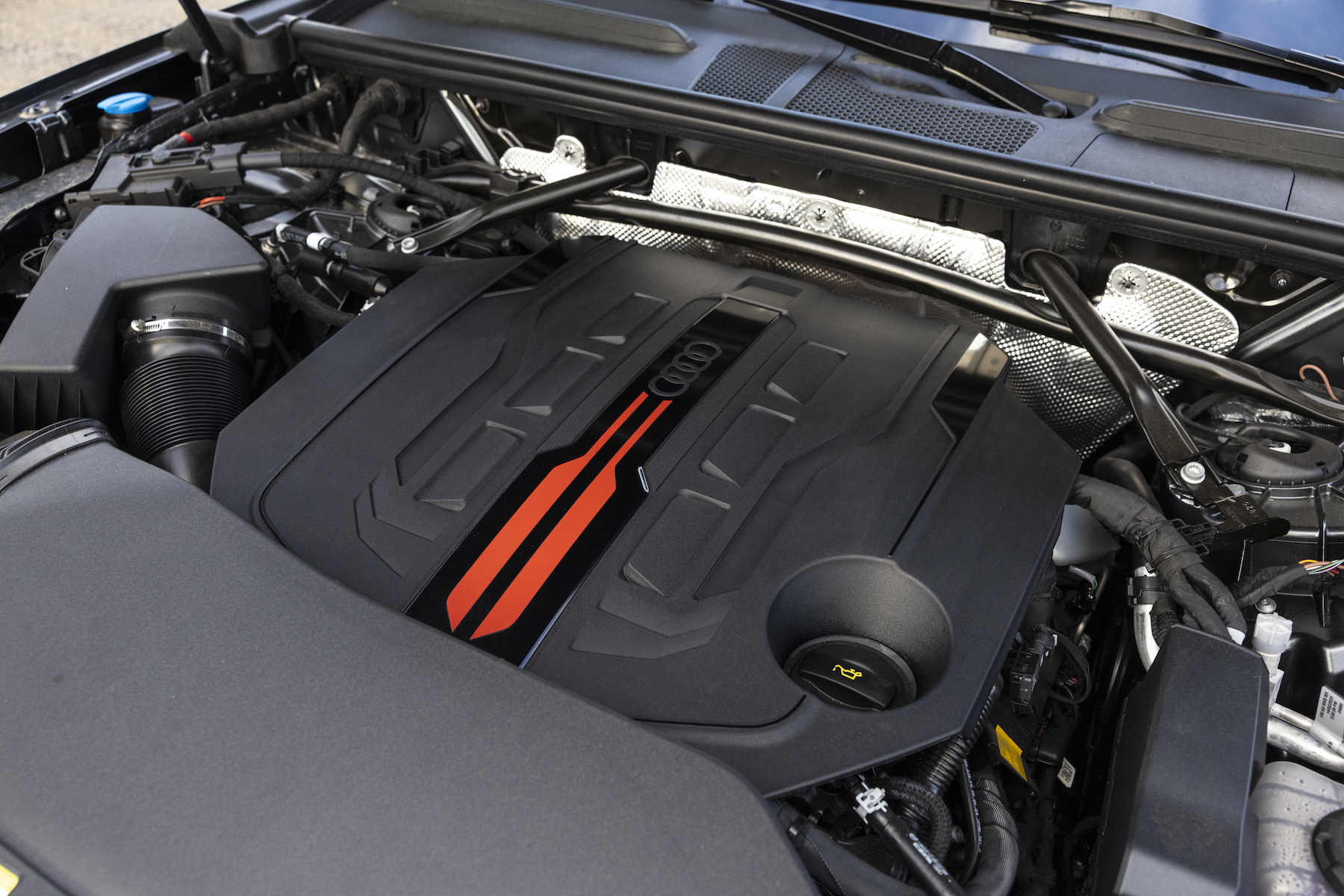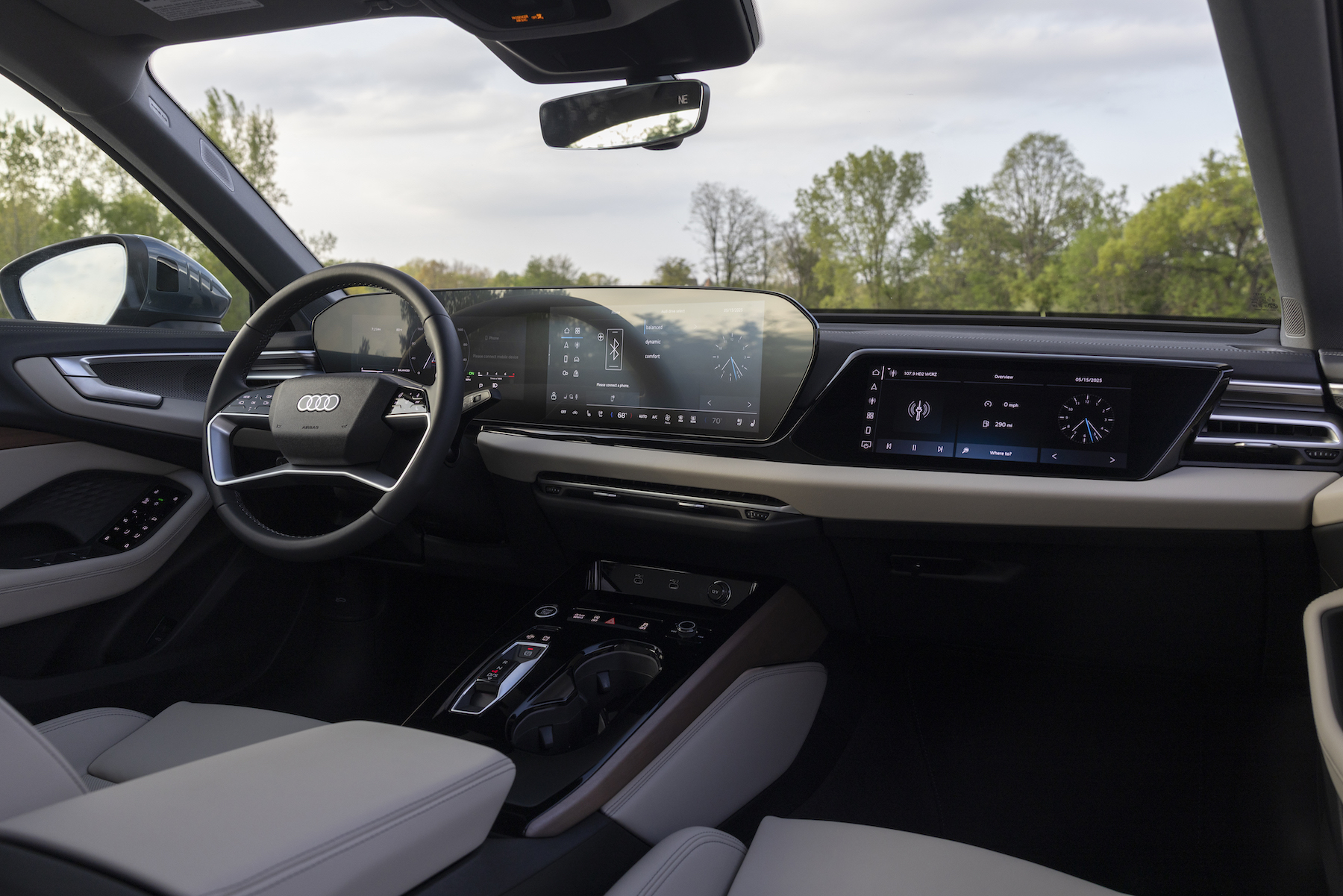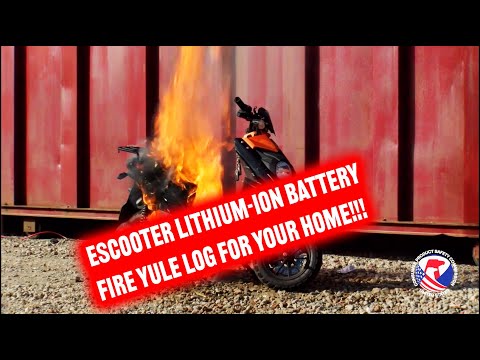Audi’s A5 sedan and Q5 SUV families—including the zippier S5 and SQ5 versions—are all new for 2025, with an updated body design, improved technology, and more power. One of its latest amenities is an available glass roof that can be adjusted with six dimmable liquid-crystal panels, adding to Audi’s reputation as a geeky favorite.
As it was in the previous generation, the Audi A5 is powered by a 2.0-liter turbocharged inline-four engine and the S5 is motivated by a turbo V6. In both cases, increased torque and power for the 2025 model is aided by turbo technology that was born decades ago. This engineering feat, called variable vane geometry, harnesses and controls airflow to create a driving experience that reflects the brand’s fun-to-drive experience.
If you’ve ever seen a rowing machine at the gym, you may have noticed the adjustable flywheel. The fan blades spin, displacing the air around it to create resistance. Opening the vents allows more air to flow through, creating more resistance and requiring more effort to accelerate. Closing the vents restricts air flow for an opposite effect. Audi’s turbos work in a similar way, and while the original concept isn’t new, the way the German automaker is using it in its newest vehicles is decidedly current.
Variable nozzle turbo
In 1989, the Shelby CSX-VNT was a compact hatchback built from a Dodge Shadow. It was a limited edition built for enthusiasts—people who liked to drive fast and hear the roar of internal combustion. It harnessed a technology called variable nozzle turbo, which eventually evolved to become the variable vane geometry in Audi models. Journalist and enthusiast Karl Brauer owned one of these unicorns–only 500 were produced–and he remembers it well.

“Regardless of the name, this technology was incredibly advanced for 1989,” Brauer says. “The computer-controlled variable nozzle in the turbo meant it could change the angle of the turbo vanes to reduce their opening size, maintaining high airflow even at low rpm.”
The result was peak torque hitting at just over 2,000 rpm, a feat previously impossible on a turbocharged street car. Later on, Porsche adapted this feature for the 2006 911 Turbo, which illustrates the impact of this engineering. If high-performance, precision Porsche models could use variable vane geometry, it had to meet the German company’s exacting standards.
A major problem with earlier turbo technology was lag; the turbos didn’t move until the engine really started spinning, Brauer explains. Shelby’s innovation meant that the adjustable vents would construct and create a smaller passageway so that even at low RPM the air would move through quickly and spin the turbo to create a supercharger effect. As you accelerate, you don’t want a small passageway at higher RPM, because you want to keep the volume of air moving.
Audi’s version of this technology allows the effective aspect ratio of the turbocharger to regulate as conditions change. Adjustable vanes are located inside the turbine housing between the inlet and turbine, controlling the flow of gases towards the turbine. As a result, the vanes allow the car to perform at low and high engine speeds.

Satisfying various driving preferences with big turbo/small turbo capability
As this engineering relates to different markets around the world, drivers enjoy the ride regardless of cultural approach to acceleration. Audi of America’s senior director of product planning Barry Hoch explains that the U.S would be considered a “low-speed market” compared to Germany, because America doesn’t have an equivalent to the Autobahn highway system. On many sections of the Autobahn, no mandatory speed limit exists and drivers often avail themselves of the opportunity to drive as fast as their vehicle and the conditions allow.
“As a high-speed market, Germany’s demands on vehicle requirements are a little different than ours,” Hoch explains. “We’re very interested in zero to 60 times, whereas the German market is very interested in the elasticity, or speed at higher RPM. And so those sometimes create conflicting requirements for the car.”
German drivers want a big turbo response at high RPM once they get moving out of the city, whereas Americans prioritize off-the-line performance, Hoch explains.
“Variable vane geometry allows us to satisfy both markets,” he says. “What we have is a large turbo that satisfies their requirements, but with the way that we can adjust the vanes we have that sort of small turbo which you would need for off the line.”

It’s all related to the torque band, which is the specific range of engine speeds, or RPM, where the engine produces its maximum torque. In this range, the engine delivers its best acceleration and power. Audi’s new A5 and Q5 families now have higher peak torque. Variable vane geometry helps the turbo work like a smaller unit at low RPM, and it doesn’t have to bleed off boost at high speeds, Hoch says. Plus, it’s more fun than what Audi had in the past with its twin-scroll turbo setup, which uses two separate exhaust paths, or scrolls to feed exhaust gases to the turbine wheel.
“We are all about that low speed driveability,” Hoch says. “This just shows how much life is left in the combustion engine segment.”
Today, the Shelby Shadow CSX is a collector car, prized for its limited run, distinctive styling, and connection to Carroll Shelby himself. But in the newest Audi models, it’s the turbo engineering that carries on its legacy.






